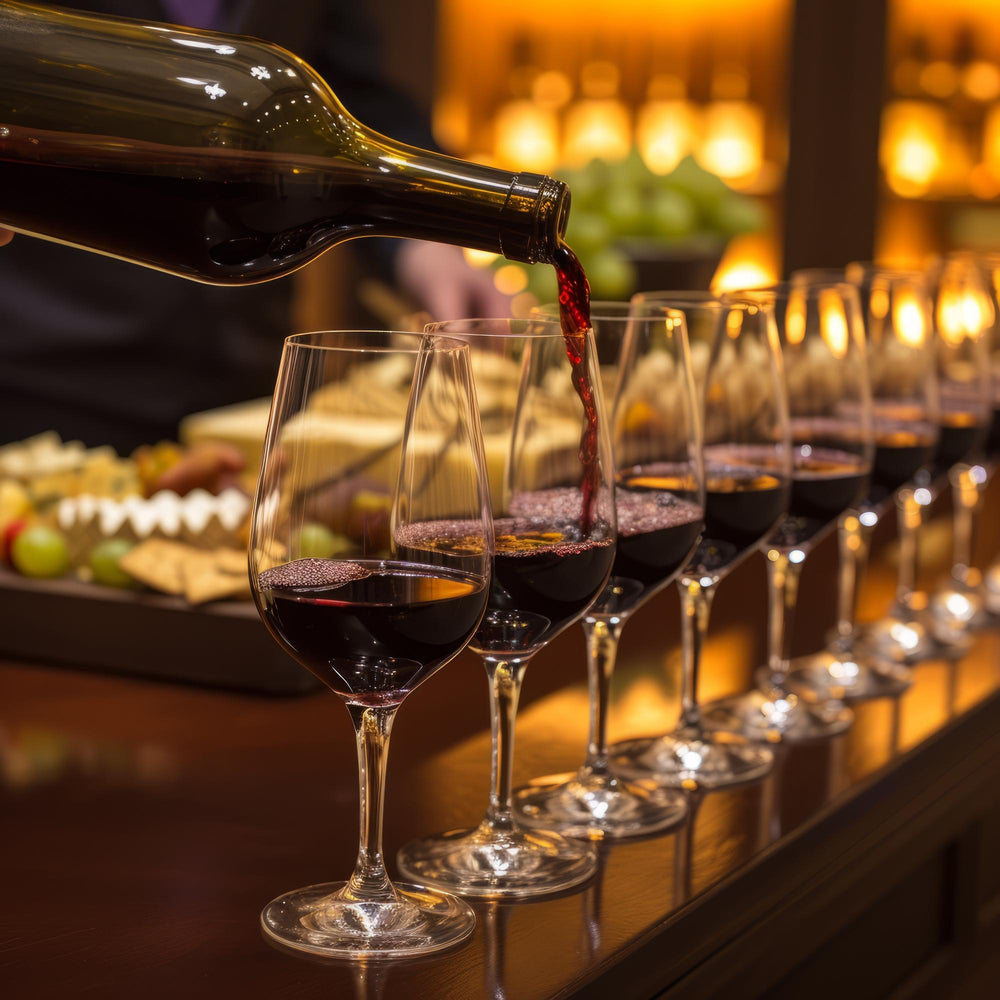Exploring the Rich Tapestry of European Wines: France, Italy, and Spain
Europe is renowned for its exceptional wine culture, with France, Italy, and Spain standing out as the giants of the wine world. Each of these countries boasts a unique vinous heritage, shaped by distinct histories, climates, and traditions. Here we delve into the key differences between French, Italian, and Spanish wines, offering a comprehensive overview of what sets them apart.
Historical Context and Cultural Significance
France: The Benchmark of Elegance French wine culture dates back to Roman times, but it truly flourished in the Middle Ages with the establishment of monastic vineyards. French wines are often considered the gold standard for quality and complexity. The French concept of "terroir"—the idea that a wine reflects the environment in which its grapes are grown—plays a crucial role in the country's winemaking philosophy. Regions like Bordeaux, Burgundy, and Champagne have become synonymous with world-class wines.
Italy: The Art of Diversity Italy's winemaking history is equally ancient, with a strong influence from the Etruscans and Greeks. Italian wines are known for their incredible diversity, both in terms of grape varieties and styles. Italy has over 350 officially recognized grape varieties, and regions like Tuscany, Piedmont, and Veneto each produce distinctive wines that reflect their local culture and geography. Italian wine is deeply woven into the fabric of daily life, often enjoyed alongside meals.
Spain: Tradition Meets Innovation Spain's winemaking tradition is also ancient, with significant contributions from the Phoenicians and Romans. However, Spanish wine has undergone a renaissance in recent decades, blending traditional methods with modern techniques. Spain is famous for its robust reds from Rioja and Ribera del Duero, as well as its unique sparkling wine, Cava, and fortified wine, Sherry. The country's diverse climate and geography contribute to a wide range of wine styles.
Grape Varieties and Styles
France: Classic Varieties France is home to some of the world's most famous grape varieties. Cabernet Sauvignon, Merlot, and Cabernet Franc dominate Bordeaux blends, while Pinot Noir and Chardonnay are the stars of Burgundy. In the Rhône Valley, Syrah and Grenache are key players, and in Champagne, Pinot Noir, Chardonnay, and Pinot Meunier create the renowned sparkling wines. French wines are often categorized by region, each with its own regulations and classifications, such as AOC (Appellation d'Origine Contrôlée).
Italy: Indigenous Treasures Italy's wine landscape is incredibly varied, with many regions championing indigenous grape varieties. Sangiovese is the backbone of Tuscany's Chianti and Brunello di Montalcino, while Nebbiolo produces the powerful Barolo and Barbaresco in Piedmont. In Veneto, Corvina, Rondinella, and Molinara combine to create the rich Amarone. Italy also excels in producing white wines, with Pinot Grigio from the northeast and Vermentino from Sardinia being notable examples. Italian wines often carry DOC (Denominazione di Origine Controllata) or DOCG (Denominazione di Origine Controllata e Garantita) classifications.
Spain: Regional Stars Spain's wine regions each have their flagship varieties. Tempranillo reigns supreme in Rioja and Ribera del Duero, while Garnacha (Grenache) is prevalent in Priorat and Campo de Borja. Albariño from Rías Baixas offers a crisp, aromatic white, and Verdejo from Rueda is another celebrated white variety. Spanish wines often carry the DO (Denominación de Origen) or DOCa (Denominación de Origen Calificada) status, indicating their quality and origin.
Winemaking Techniques and Styles
France: Tradition with Precision French winemaking is often characterized by a meticulous approach, emphasizing terroir and tradition. Bordeaux wines typically undergo long aging in oak barrels, contributing to their complexity and longevity. Burgundy's focus is on expressing the subtle differences between vineyards. In Champagne, the méthode champenoise (traditional method) is employed to create fine bubbles. The French regulatory system ensures that wines adhere to strict standards, preserving the integrity of regional styles.
Italy: Passion and Innovation Italian winemakers balance respect for tradition with a willingness to innovate. For instance, the "Super Tuscans" of Tuscany broke away from DOC regulations to create bold, modern wines using international grape varieties like Cabernet Sauvignon. In regions like Sicily, there's a resurgence of interest in ancient grape varieties and techniques. Italy's diverse climate allows for a wide range of winemaking practices, from the appassimento method used to make Amarone to the crisp, fresh whites of Alto Adige.
Spain: Bold and Diverse Spanish winemaking blends age-old traditions with cutting-edge practices. Many red wines, particularly from Rioja, are aged extensively in American oak, imparting distinctive flavors. Modern Spanish winemakers are also exploring new styles and regions, bringing fresh excitement to the industry. Sherry production in Jerez follows a unique solera system, and Cava from Catalonia is made using the traditional method similar to Champagne. Spain's wine industry is dynamic, with a growing emphasis on quality and terroir.
French, Italian, and Spanish wines each offer a unique glimpse into their respective cultures and histories. France stands out for its emphasis on terroir and classic elegance, Italy for its remarkable diversity and innovation, and Spain for its bold flavors and dynamic evolution. Understanding these key differences enhances our appreciation of the rich tapestry of European wines, inviting us to explore and enjoy the distinctive charms each country brings to the world of wine.





